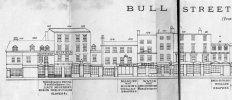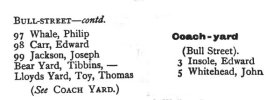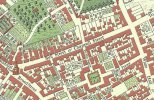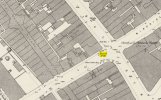shoarthing
proper brummie kid
Hi - I'm an historian researching some real-estate on & behind Bull Street (Cherry Orchard side) belonging to an early Birmingham entrepreneur - an immensely successful saw-maker of H1 C18th named: William Smith . . .
. . . . it's a Birmingham success-story (bless!) so as we all know the hero's long-forgotten, & the site's been built & brutally rebuilt; but I believe one of William Smith's houses was called: "Boar house" . . . I also suspect it is likely to have been #103 in that lovely Suffield-supplied 1840 street-view - which as all you Birmingham-experts know, appears to have a plaque of a boar upon the wall above #103's street-entrance.
Do any of the experts here - either the well-read - or well-imaged (I have a really weak knowledge of C18th/19th drawings/paintings of Bull Street) - have anything to add to our knowledge about "Boar house"? Who it was built for or by? Other images? Some recollections from reading in the archives? Local histories?
The street-numbering didn't change a great deal, I believe.
. . . . it's a Birmingham success-story (bless!) so as we all know the hero's long-forgotten, & the site's been built & brutally rebuilt; but I believe one of William Smith's houses was called: "Boar house" . . . I also suspect it is likely to have been #103 in that lovely Suffield-supplied 1840 street-view - which as all you Birmingham-experts know, appears to have a plaque of a boar upon the wall above #103's street-entrance.
Do any of the experts here - either the well-read - or well-imaged (I have a really weak knowledge of C18th/19th drawings/paintings of Bull Street) - have anything to add to our knowledge about "Boar house"? Who it was built for or by? Other images? Some recollections from reading in the archives? Local histories?
The street-numbering didn't change a great deal, I believe.
Attachments
Last edited:










